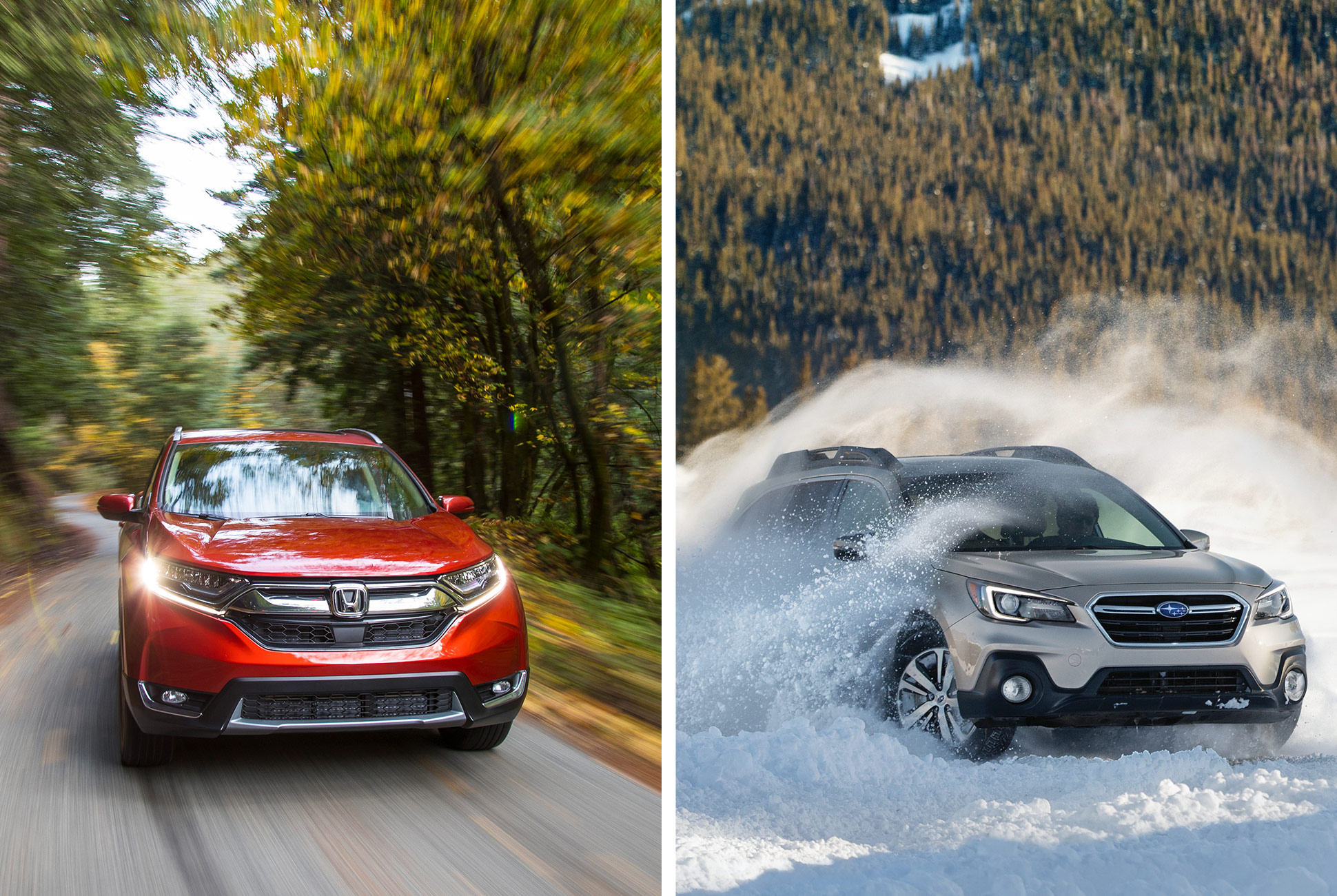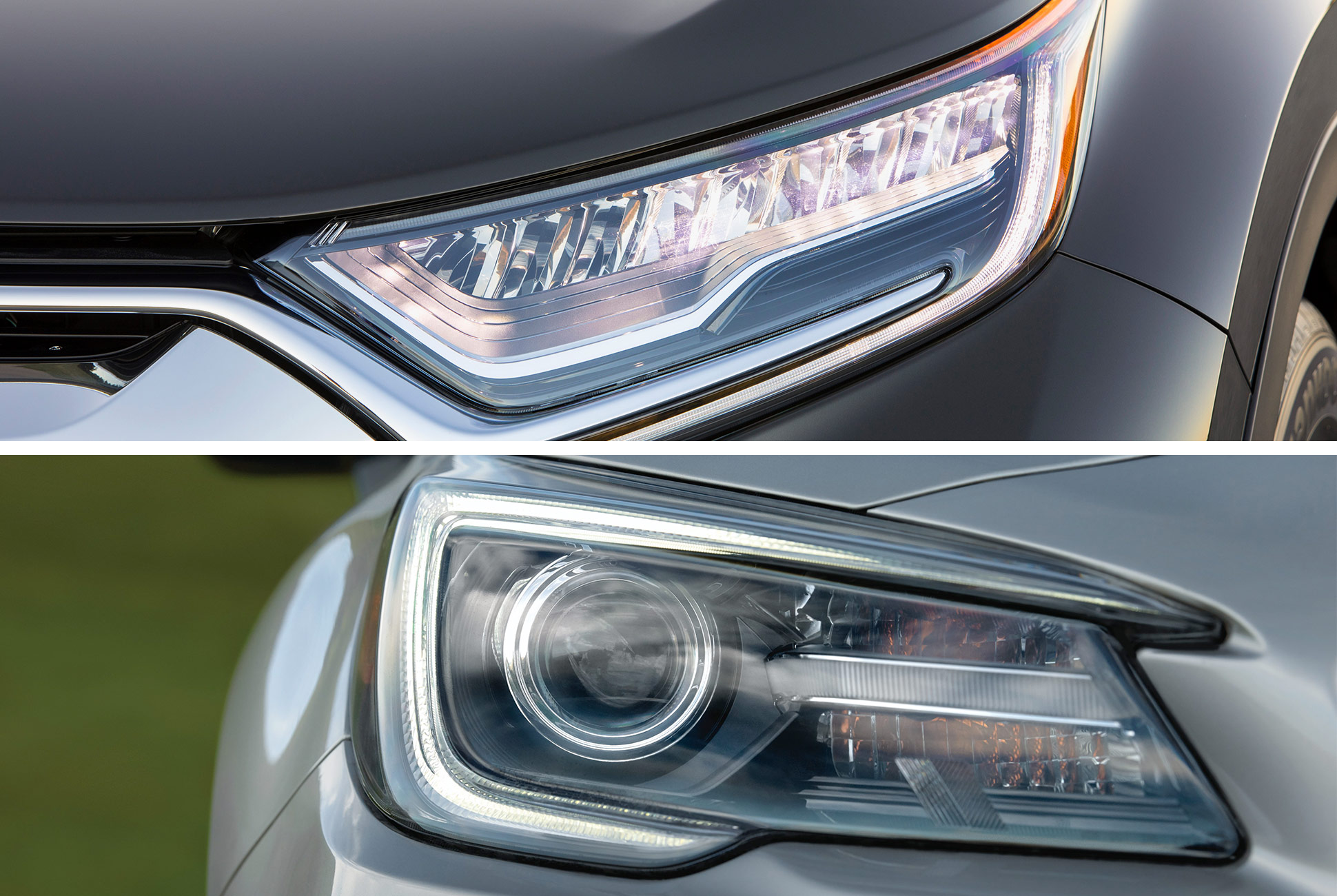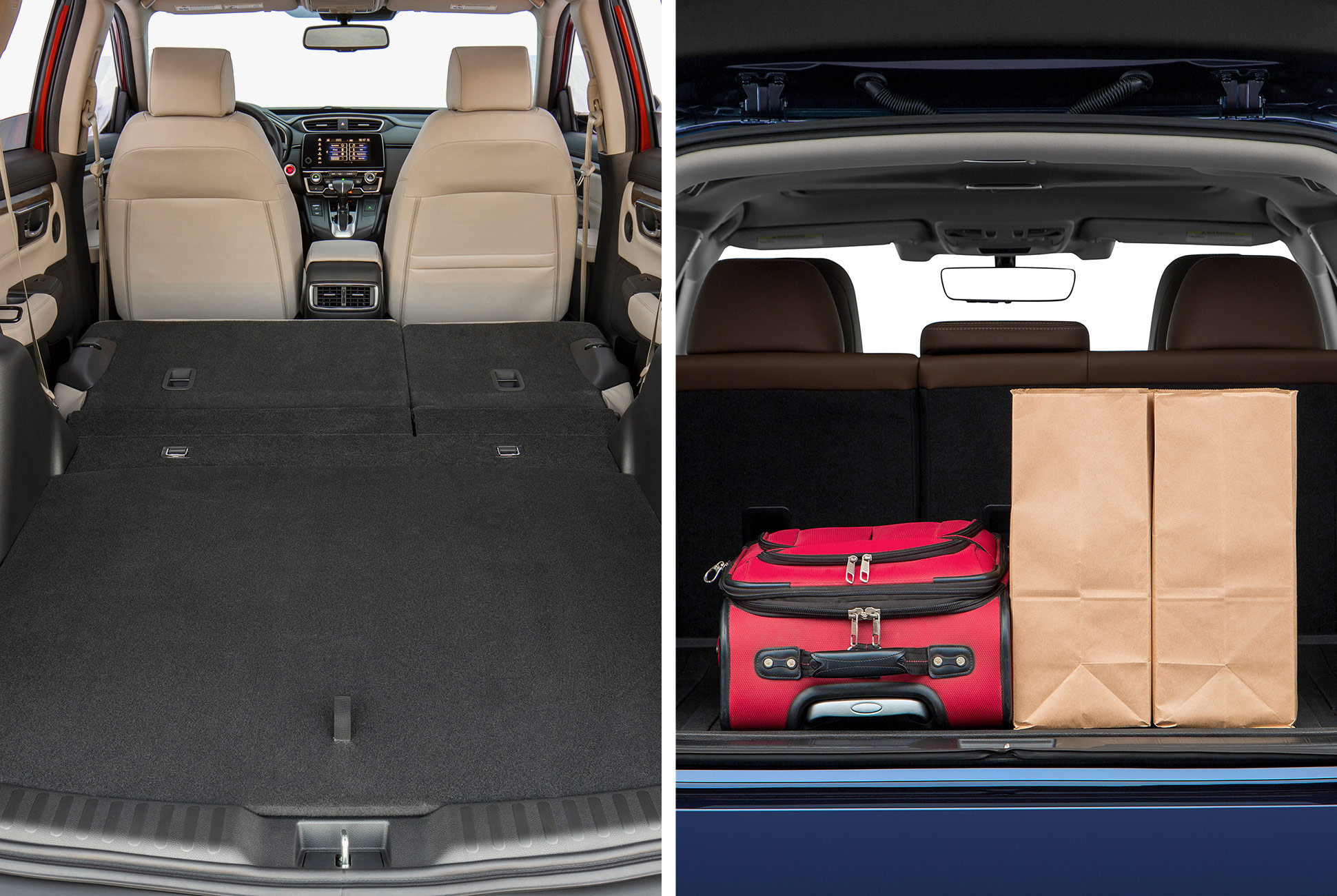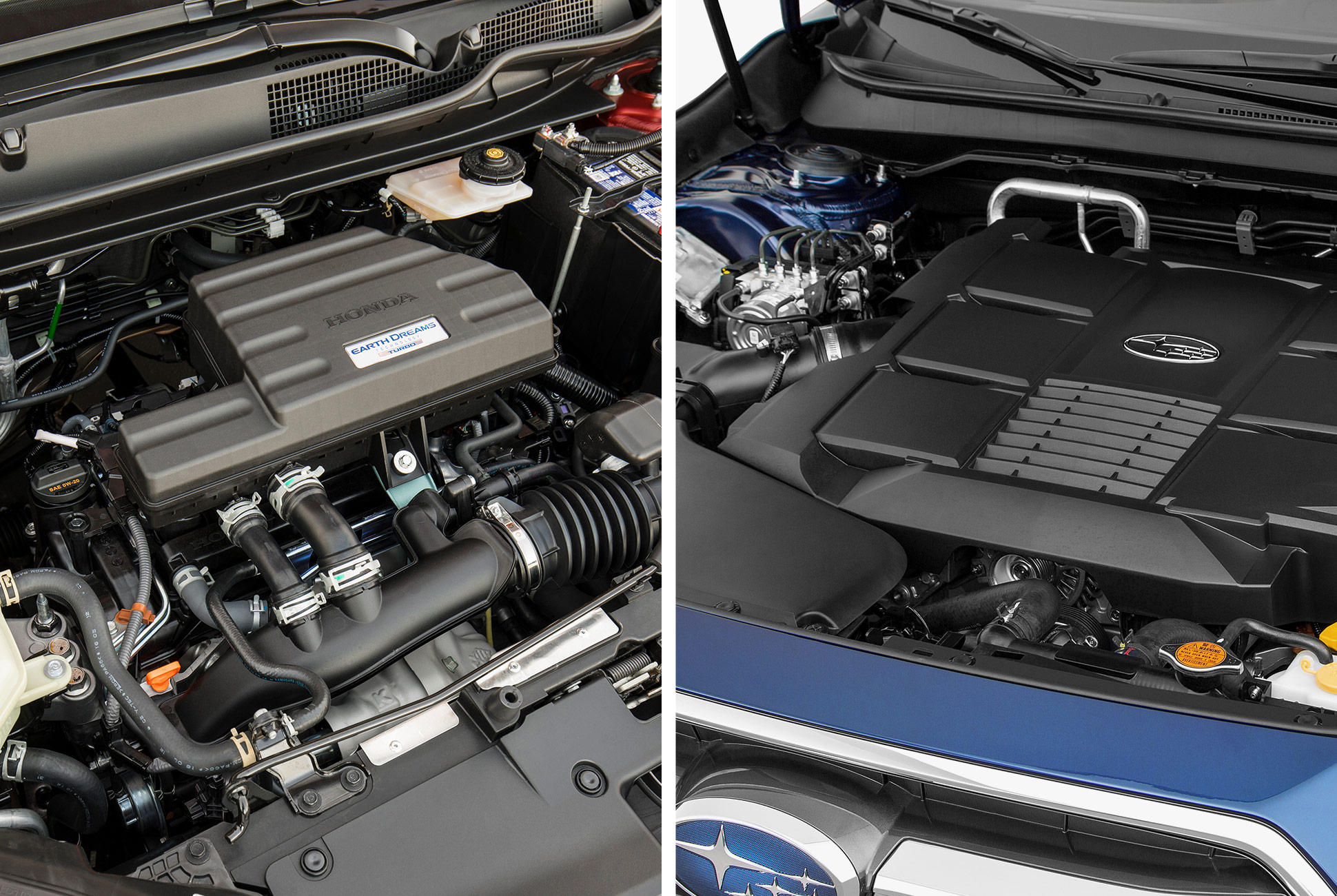Parenthood alters the car buying calculus. Procreating does not consign you to bland, kid-transporting purgatory necessarily. But, your priorities change. Active safety features supplant horsepower. Your cargo bay must hold more than a couple weekender bags and a bottle of rosé. Value becomes paramount. You want the best car that meets your family’s needs. But, with miscellaneous and escalating child expenses, money will be tighter. The question, for parents who can’t afford to pop over to the Mercedes or Volvo dealership, is what is that best value family car?
Before answering, let’s define the “family car.” For our purposes, a family car is a vehicle that fits a family of four on a road trip comfortably. That means practical seating for five and significant cargo capacity. Sardining your wife, two small kids and a tiny cooler into a Porsche 911, while admirable, does not a family car make.
CRITERIA
I used four broad parameters to narrow down our “value” field:
• First, monetarily, it had to be a value purchase. The sticker price had to be less than $30,000. The car needed strong reliability, good gas mileage and high resale value.
• Second, it had to be safe. Any car without a five-star NHTSA crash test rating and IIHS Top Safety Pick status was excluded. The trim had to include the manufacturer’s active safety features at that price.
• Third, the car must have family utility: cargo space, versatility, all-wheel drive, family-friendly tech etc.
• Finally, we considered style and performance. Being decent to drive helped.
THE CONTENDERS
The choice came down to what, in this price braket, is a classic debate. The Honda CR-V (base MSRP: $24,250) is the preeminent budget crossover. But, do you buy that over the Subaru Outback (base MSRP: $26,345), the ultimate reliable utility wagon?
VALUE
Advantage: Push
Both cars met the sub-$30,000 sticker price requirement. For the CR-V, that allowed an upgrade to the EX trim to include the Honda Sensing safety features. That plus AWD, mats and an accessory or two still put the price a hair under the limit. For the Outback, that meant either sticking with the base 2.5i trim starting at $26,395 or the 2.5i premium trim with nothing but floor liners.
Both cars are cheap to own. The CR-V gets best-in-class gas mileage (27 city, 33 hwy) for an SUV. That’s a slight edge over the Outback (25 city, 32 hwy), which is still quite efficient. Both the CR-V and the Outback received 10/10 mechanical quality ratings from J.D. Power, limiting the maintenance costs. Edmunds’ five-year True Cost to Own figures for the CR-V and the Outback are within $500 of each other. Both are under $40,000.

Both cars maintain their value. Mechanical quality (and Honda and Subaru’s reputation for it) mean a high residual value for leases and a high resale value. True ownership can be much longer than a five-year proposition. Both the CR-V and the Outback can go well past 100,000 miles before their value dips into the four-figures. AutoTrader is rife with examples of both cars still kicking well past 200,000 miles.
We wanted to include the VW Golf Sportwagen here. With its peppiness and precise handling (and cheaper manual transmission option), it is a treat to drive. But, it was hard to make the “value” work. 4Motion is only available in the base S model. The active safety features are in the SE model. To get both, you need an AllTrack SE which will take you north of $30,000.
SAFETY
Advantage: Push
Both cars have five-star NHTSA crash test ratings and the highest IIHS Top Safety Pick+ rating. The CR-V includes Honda Sensing, which brings a collision mitigation braking, a road departure migration system, forward collision warning, lane departure warning and adaptive cruise control.
Subaru is doubling down on safety (and hastening the manual transmission’s demise) with its dual camera EyeSight Driver Assist Technology. That includes adaptive cruise control, lane keep assist and pre-collision braking and throttle management. Both systems strive to avoid the avoidable collisions and to mitigate the impact of the unavoidable ones.

The CR-V has a blind spot and cross-traffic monitor standard on the EX-trim. A similar feature on the Outback requires the 2.5i Premium trim and a $1,100 package, pushing the sale price just north of $30,000. However, with the CR-V that feature is a must-have. The Outback, with boxy styling, thin pillars and large windows, offers excellent visibility. The CR-V with thick pillars, headrests, and a sloping rear window permits less than ideal rear visibility.
UTILITY
Advantage: Outback
Dimensions for the CR-V and Outback are similar. Both are spacious enough for five people and a large amount of stuff. The CR-V (39.2/75.8 cubic feet) edges the Outback (35.5/73.3 cubic feet) for cargo capacity. However, the Outback has slightly more generous passenger volume (108.1 cubic feet) to (102.9 cubic feet) for the CR-V EX trim. The Outback also offers roof rails with retractable cross bars. Roof rails for the CR-V are available on the high-end Touring Trim.
The Outback gets the edge for versatility and off-road capability. The CR-V did increase its ground clearance (up to 8.2 inches), though it still trails the Outback by a bit (8.7 inches). There’s still a difference between being a specially designed all-wheel drive, all-weather, all-terrain vehicle like the Outback and being a pavement dweller that can withstand some dirt, even if you add a lift kit and off-road tires.

Tech-wise, Honda’s infotainment system euphemistically would be described as “quirky.” Tellingly, one of the most praised features for the latest CR-V is the return of the manual volume knob. The CR-V EX does have a push-button start. That’s only available on higher Outback trims. With the Outback, you need the 2.5i Premium trim to get dual-zone climate control and rear USB ports. The Subaru offers 4G-LTE Wifi. Both are compatible with Apple Carplay and Android Auto, which is what most customers want.
Slight edge to the Outback here for its off-road capability.
PERFORMANCE AND STYLE
Advantage: Push
Driving impressions for the Outback and CR-V will read similarly. Both handle decently. Both accelerate slowly with four-cylinder engines. The 1.5L turbo on the EX is the upgraded option for the CR-V. Outback buyers can upgrade from the 2.5L four-cylinder boxer (175hp) to the 3.6L six-cylinder (256hp) for more oomph, but that shoots up the price (the 3.6R Limited starts at $35,970) and comes at the expense of fuel economy (20 city, 27 hwy). The CR-V gets the nod here, as its acceleration is merely slow. On the Outback it is glacial. Reviewers also think the CVT transmission on the CR-V behaves better.

Give the Outback the edge for style. It’s not cool per se. But, it’s rugged and, in theory, a cool, outdoorsy person could own one to facilitate his or her cool, outdoorsy lifestyle. You’re heading to soccer practice, not loading up your kayak for a Saturday in the wilderness. But, the point is you could. One might term it “New England college town chic.” The CR-V doesn’t earn its plaudits with appearance. It’s a crossover, without much distinction in the style department.
VERDICT
The Subaru Outback is the choice.
Yes, the Honda CR-V is the gold standard for budget crossovers. There are many reasons it is one of the best-selling vehicles in the U.S. It’s a great crossover, but it’s still a crossover. It blends right into the background in its natural habitat, the elementary school parking lot. You may have to hit the lock button on your key fob a few times to remember which one is yours.

The Outback brings more versatility, utility, and possibility. It offers distinction and an endearing blend of toughness and dorky charm. It’s the car you would choose to extricate your family from a random calamity, which is something you now consider. Would the Outback win a point-by-point road test with the CR-V? No. But, that’s not how you choose a life companion, which your Outback could be for the next 10-15 years.
Subaru Outback Specs:
Engine: 2.5L four-cylinder
Transmission: CVT
Horsepower: 175
Torque: 174 lb-ft
Weight: 3,624 lbs
0-60: 9.3 seconds
Engine: 1.5L turbocharged inline-four
Transmission: CVT
Horsepower: 190
Torque: 179 lb-ft
Weight: 3,358 lbs
0-60: 7.5 seconds

